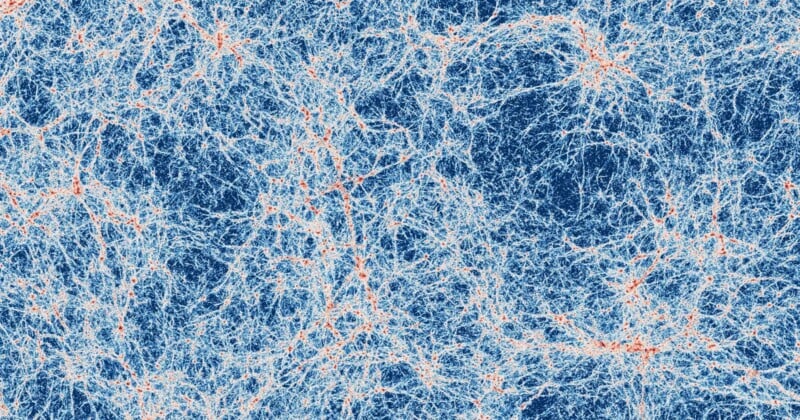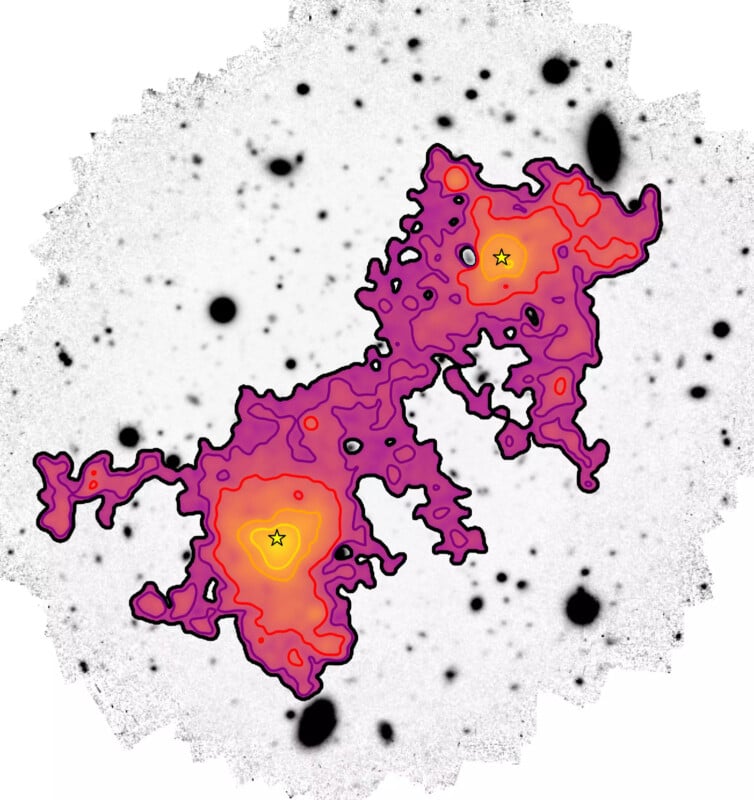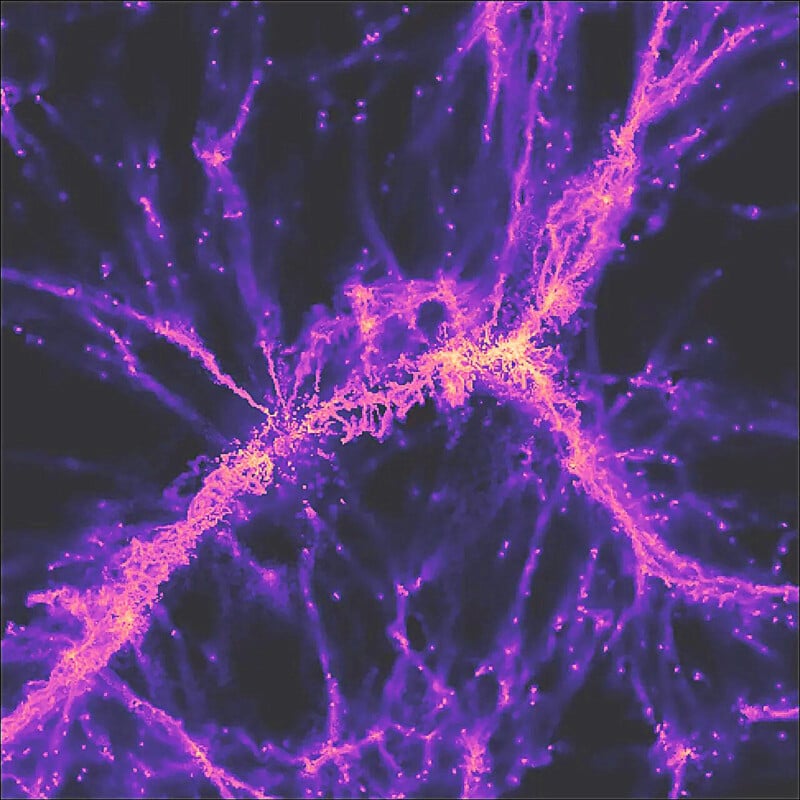
An international team of astronomers captured direct evidence of the filaments that weave an interconnected web throughout the cosmos.
Physicists have long theorized the existence of this cosmic web of matter, but it has proven exceptionally challenging to observe. As Earth reports, astronomers from the University of Milano-Bicocca and the Max Planck Institute for Astrophysics published new research that includes high-definition images of the filaments that connect a pair of quasar-host galaxies, providing the first direct images of the theorized cosmic web and lending credence to cold-dark-matter theories.
Many physicists believe that there is a hypothetical type of dark matter, cold dark matter, which underpins the Lambda-CDM mathematical model of the Big Bang. This is the current standard cosmological model, and despite its relatively high level of success under scientific scrutiny, the dark matter required for the model to function has been complicated to observe.

Observation of dark matter and dark energy is a significant focus for modern physicists and astronomers. Scientists are using tools like the James Webb Space Telescope, the Euclid space telescope, and the groundbreaking LSST, the world’s largest digital camera, at the Vera C. Rubin Observatory to find evidence for the dark matter and dark energy scientists believe are coursing through the Universe. Current estimates suggest that only about 5% of the matter in the Universe is ordinary matter, the stuff that can be directly observed.
The new team of researchers who directly imaged cosmic filaments used the Multi-Unit Spectroscopic Explorer (MUSE) mounted on the Very Large Telescope (VLT) at the European Southern Observatory (ESO) in Chile. MUSE detects a wide range of spectra, which enables astronomers to see the very weak hydrogen emissions tied to the otherwise invisible filaments.

This very faint filament is, as Earth describes, a “gravitational highway” for cosmic gas, which includes the materials required to form new stars. The direct observation of this pathway through space provides significant evidence for cold dark matter theories, which suggest that galaxies grow by accumulating gas through a series of interconnected webs rather than through isolated clouds of matter in the interstellar medium.
“By capturing the faint light emitted by this filament, which traveled for just under 12 billion years to reach Earth, we were able to precisely characterize its shape,” says Ph.D student Davide Tornotti from the University of Milano-Bicocca. Tornotti is the lead author on the new study.
![]()
“For the first time, we could trace the boundary between the gas residing in galaxies and the material contained within the cosmic web through direct measurements,” Tornotti continues.
Tornotti and the team used MUSE’s sensitivity to capture the sharpest image ever of a cosmic filament, which spanned about three million light-years.
Image credits: ‘High-definition imaging of a filamentary connection between a close quasar pair at z = 3‘ by Davide Tornotti et al. Additional image credit © Alejandro Benitez-Llambay/Universität Mailand-Bicocca/MPA
Source link


